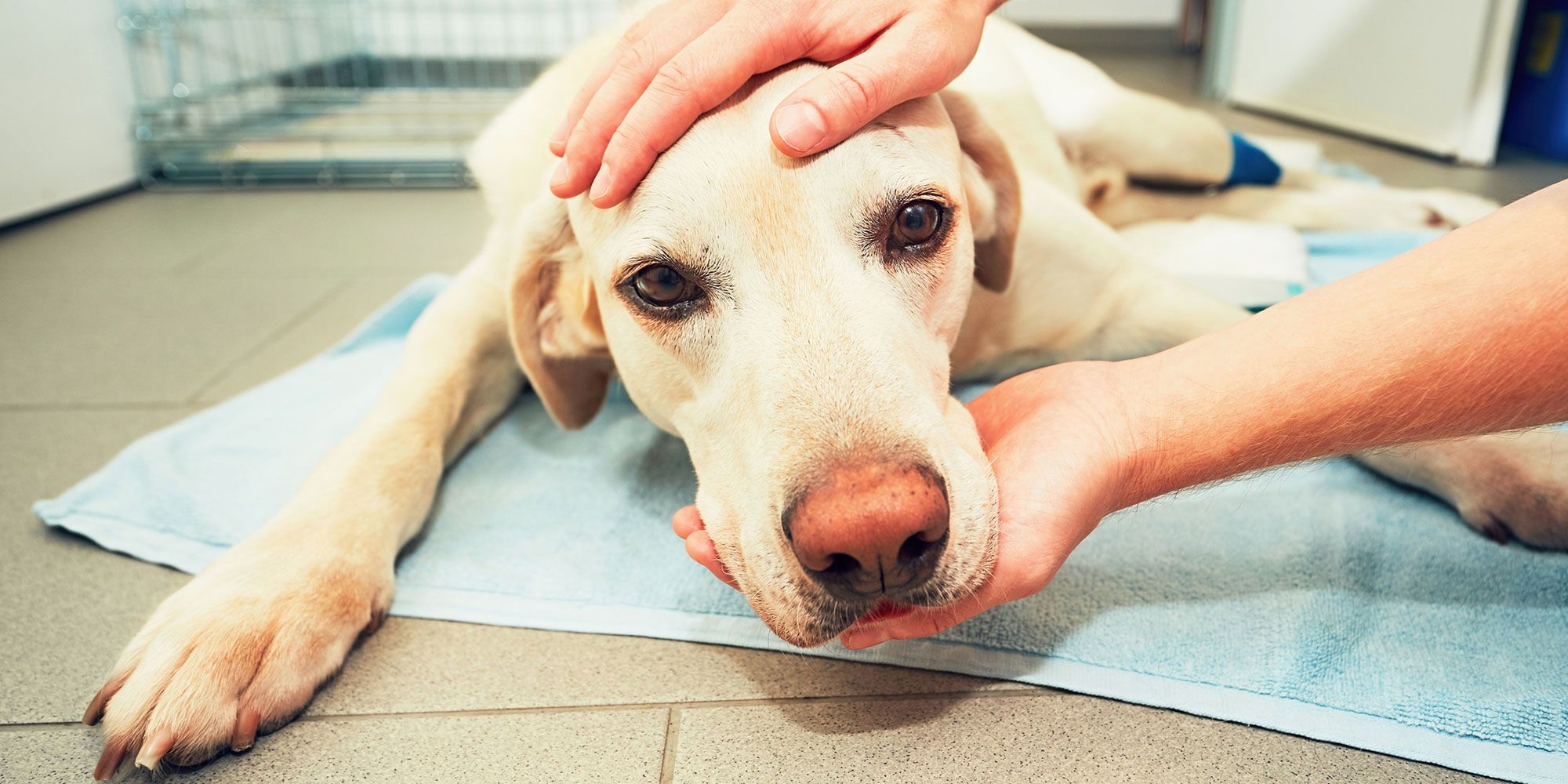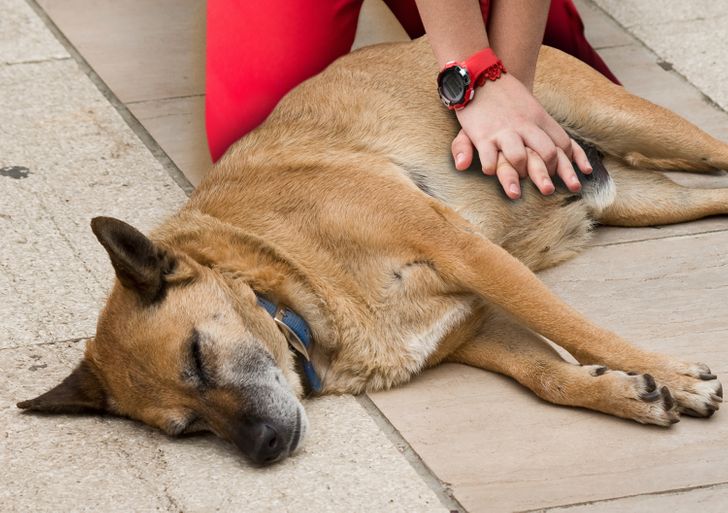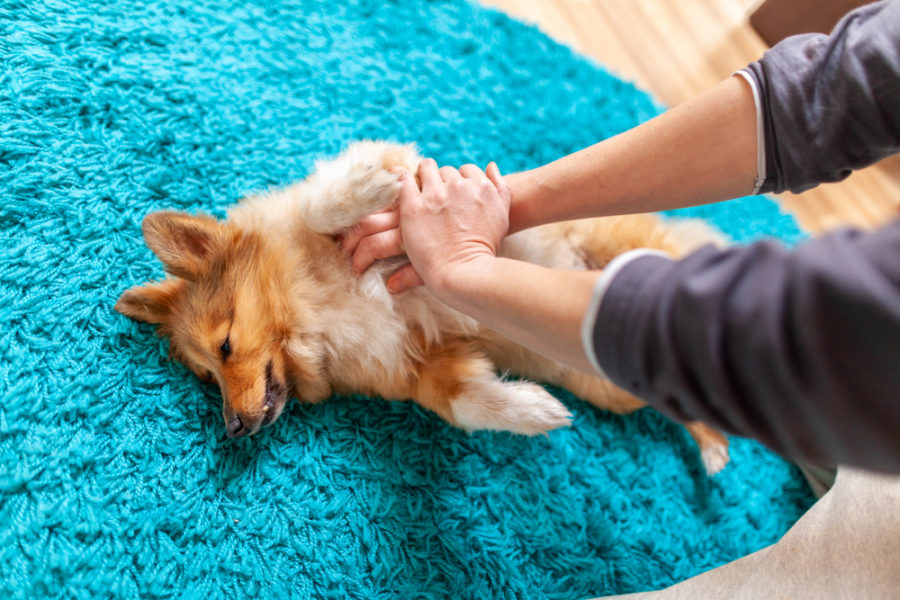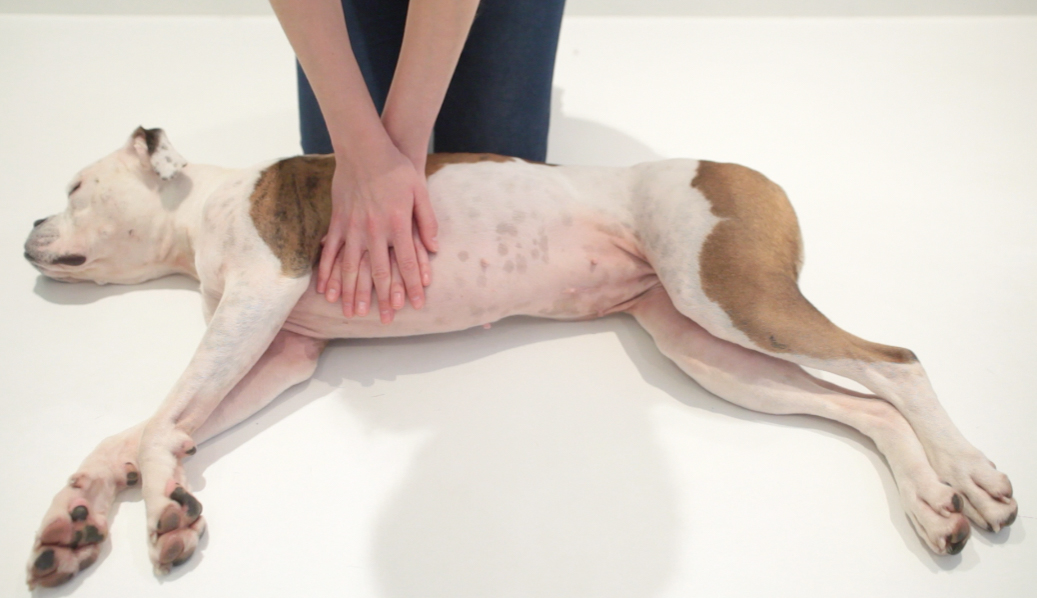Our dogs are family members that we love deeply. And just like any other family member, we want to be able to do whatever necessary to help them in case of an emergency. I’ve been lucky enough to never have any major emergencies with my dog Coco (unless you count her skunk attack) but I’ve still intentionally made sure I know the necessary life saving techniques should a medical emergency arise and I don’t have time to get her to the vet. Knowing how to perform dog CPR is one of those life saving techniques.

In this article, I'm going to take you through the steps of when and how to perform dog CPR in case you ever need it for your furry friend!
What is Dog CPR?
Dog CPR is a life-saving procedure that promotes blood flow back to a dog’s stopped heart. It’s the same procedure used on humans but, as you can imagine, must be conducted in a different way. The main goal of CPR is to pump blood manually until the return of spontaneous circulation.
Resuscitation efforts lead to the heart beating again but only if you execute this procedure right. Otherwise, it could cause losses in the pooch's mental ability or other side effects. If preventing cardiac arrest fails, you should provide immediate support and monitor the dog's conditions. Once your pup has been resuscitated, it is incredibly important that you get emergency veterinary care to determine the necessary post arrest care.
When to Perform Dog CPR?
The importance of doing this procedure as soon and effectively as possible cannot be overstated. In fact, blood flow maintains your pet's cerebral function. Not only will dog CPR bring your pooch back to life, but it also ensures minimal brain damage. By maintaining good brain, heart, and lung function, the chances of your doggy resuscitating increase. Above all, dog CPR can buy you enough time till a trained vet comes to the rescue.

You can find hundreds of guidelines on performing dog CPR online but the most crucial thing you can do is to keep your knowledge current and easy to review. I recommend you bookmark any particularly helpful pages (like this one) with clear instructions on how to perform dog CPR. So, be sure to come back to read any updates to the following instructions on how to perform dog CPR.
Since you do not have to be someone with any medical training to do CPR on a dog, more people can learn how to do it. Rehearsing such an emergency procedure every six to twelve months could also be a good idea to build mental toughness and strength. Especially if your pooch is getting up there in age.
Dog CPR for Small Dogs
The way in which you perform dog CPR depends on the size of the dog.
Let’s look at the standard procedure for any small or medium size dog. Keep in mind – time is key. You only need to see that your doggo is unresponsive and it is not breathing. Assume that the heart stopped and proceed swiftly.

Steps To Perform Dog CPR on a Small Doggie
- Place your hand in front of the pup’s nose to assess if he or she is breathing. At the same time, watch or feel with the other hand if the ribcage rises and falls.
- Check the dog's airway by opening its mouth. Pull the tongue forward and see if an object obstructs the throat.
- Place the dog on its right side and your hands at the midpoint of the chest. For keel-chested dogs (like Boxers, Dobermans, Pinschers, and even some German Shepherds), you need to place your hand over the heart point (where the doggie's elbow meets the chest)
- Position one hand over the top of the other hand and your shoulder must be directly over the hands. Lock your elbow to prevent low-quality reps and incorrect weight transfer.
- For the best results, bend at your waist rather than bending the elbows. If done correctly, you will engage your core muscles, like when doing a sit-up.
- Begin doing chest compressions. After 30 seconds, blow air into the nose and repeat. Keep the dog's mouth shut as best as you can.
Important Note: Be aware that flat-chested breed dogs like French Bulldogs are an exception to the rule. In these breeds, you need to roll the animal onto its back. Then, perform compressions directly over the sternum. Just like you would do with a human you like.
Good chest compression depends on rate and efficiency. With the proper technique, you can achieve anywhere between 20 to 40% of normal blood flow. But for this to happen, a rate of 100 to 120 beats per minute is necessary.
Dog CPR for Larger Dogs
Larger dogs require more strength when conducting chest compressions. Let’s take a look at how to properly perform dog CPR on a larger dog.

Steps To Perform Dog CPR on a Large Pooch
- Place your hand in front of the pup’s nose to assess if he or she is breathing. At the same time, watch or feel with the other hand if the ribcage rises and falls.
- Check the dog's airway by opening its mouth. Pull the tongue forward and see if an object obstructs the throat.
- Place the dog on its right side and your hands at the midpoint of the chest. For round chested pups like Labradors, start compressions over the highest point of the chest.
- Begin doing chest compressions. After 30 seconds, blow air into the nose and repeat. Keep the dog's mouth shut as best as you can.
- Aim to compress the chest as deeply as about one-half to one-third of the chest width. The chest compressions should also be quite hard in large breed dogs. In between chest compressions, the chest needs to fully re-expand. This minor detail will maximize CPR effectiveness in moving blood around the body.
Important Note: Never lean on the dog when you are doing chest compressions. Bend at the waist by flexing your core muscles. You might be more prone to this error as you get tired so if someone else is present, it’s best to switch off as needed. Providing two breaths for every thirty compressions is a good ratio and will help save up some energy.
Heimlich Maneuver for Dogs
If you run into a situation where your pooch starts choking, you need to act quickly and perform the Heimlich Maneuver. Whether a bone or other object had lodged in its throat, your pet will display signs of extreme distress. Also, look out for excessive drooling or repetitive pawing at the mouth, gagging or retching.
Steps to the Heimlich Maneuver
- Have the dog's back facing your chest.
- Cup one hand over the other hand balled in a fist.
- Then, give five firm thrusts upward, behind the last rib (You know that you pushed the right spot because it is the part where the abdomen starts to feel a bit squishy)
- Check if the lodged object moved to the oral cavity for removal or perform it again.
- If your pooch loses consciousness, start dog CPR quickly.
- At most, perform the Heimlich Maneuver up to two times after the pet stops breathing.
- Before performing dog CPR, open the mouth and see if you can remove the item your dog choked on.
Important Note: After removing the object, have a vet check any damages to the chest or throat area. Your dog might act fine, but have a professional look at it just to be certain!
Dog CPR – Final Thoughts
I knock on wood every single day that nothing will happen with my chocolate lab Coco. I want her to live a long and happy life with no injuries or illnesses. But, we cannot always plan for everything and it’s better to be prepared for the worst. By learning how to perform dog CPR you may actually end up saving your dog’s life one day!
*Disclosure: I only recommend products I would use myself and all opinions expressed here are our own. This post may contain affiliate links that at no additional cost to you, I may earn a small commission.



